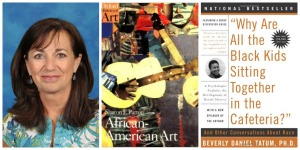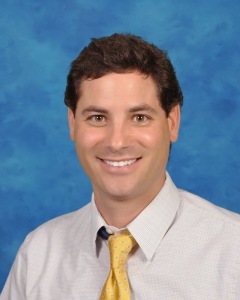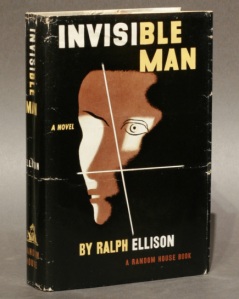February marks Black History Month and we asked several faculty members to share their reading suggestions with the Gilman community.
Let's dig right in:
Jerry ThornberyUpper School History
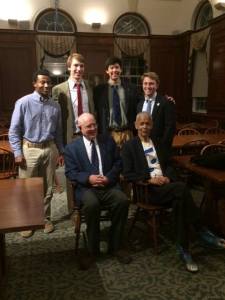
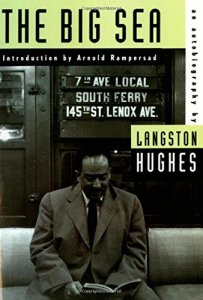

The Big Sea, Langston Hughes
Born in 1902, Langston Hughes, the great poet, wrote the first volume of his autobiography to chronicle his life up to 1931. The book has significance because it shows the forces that shaped this important African American man of letters, discusses the origins of some of his most famous poems, and offers a revealing first hand account of the Harlem Renaissance, the black literary movement of the 1920s, a time when as Hughes puts it, "the Negro was in vogue."
Coming of Age in Mississippi, Anne Moody
Anne Moody's memoir looks at a young woman coming of age in the 1950s in southwest Mississippi, explains how she joined the civil rights movement while a college student in the early 1960s, and discusses her work as an activist in Jackson, in the Delta, and in Canton. This is an important primary source because it looks at the life of a foot soldier in the Mississippi Movement. Too often Americans focus only on the lives of civil rights leaders. This book is an important corrective.
I have a personal connection to this book as well. Anne Moody graduated in 1964 from Tougaloo College, a historically black school, outside of Jackson. A year later, in an exchange program between that school and Ripon College in Ripon, Wisconsin, six or seven Tougaloo students visited the Ripon College campus, spoke formally and informally about their experiences, and attended classes. What they had to say about both their experiences in the North and in the South made me begin to rethink my assumptions about race relations in America. Fast forward twenty some years and I am teaching Moody's memoir in my classes, in part because of that encounter with her classmates. I began to wonder if Moody's experiences could be validated (there is a lot of dialogue in the book that makes it sound more like a novel than an autobiography).
Gilman School gave me summer grant money to explore the vast civil rights collection at the State Historical Society of Wisconsin in Madison. I brought back documents that indeed validated Moody's experiences and documents that I still use in my class today. I also found a contact number of a white classmate of Moody's, Joan Trumpauer Mulholland, who lives in northern Virginia. Joan is discussed in the book and confirms much of what Anne has written about her, especially their experiences returning from the March on Washington. Joan has spoken in my class many times and has discussed her activities as a Freedom Rider and a civil rights activist at two school assemblies.
Diane FullerDirector of Libraries
Game, Walter Dean Myers
Award-winning young adult author Myers tells the story of Drew Lawson, a high school student who hopes basketball and being recruited by a Division 1 team will help him get out of Harlem. When two new players make the team and Drew is benched, he starts to learn more about life and leadership. Myers writes with a rhythm that suits the book, including the basketball games, very well.
The Kitchen House, Kathleen GrissomLavinia, an orphaned seven-year-old white girl, is brought to work in the kitchen house on a tobacco plantation. The story details her upbringing by the slaves and her eventual marriage to the plantation owner's son. This is an emotional story, with descriptions of the slaves' lives on the plantation and their acceptance and love of Lavinia.
Shonique AlexanderAssistant Head of Middle School
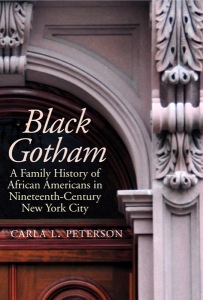
 Black Gotham, Carla L. Peterson
Black Gotham, Carla L. Peterson
I am in the middle of reading Black Gotham by Carla L. Peterson, professor of English at the University of Maryland College Park. As a native New Yorker, this book grabbed my interest after a visit to the Reginald F. Lewis Museum. In this book, Professor Peterson explores nineteenth century New York City in a quest to learn more about her family's history and to her delight discovers the history of the Big Apple's Black Elite. Peterson references many places I visited as a young child. It brought back many fond memories of my childhood!
Lisa TeelingFifth Grade Teacher
African-American Art, Sharon F. Patton
Ever since I placed it on my desk, the boys in 5A have been picking it up and looking at all the wonderful illustrations of art by African Americans. Their work is inspirational!
Why Are All the Black Kids Sitting Together in the Cafeteria? And Other Conversations About Race, Beverly Daniel Tatum
This book is on my desk is a pile of professional books I have recently picked up to read again. I found it enlightening the first time I read it, and worthy of a second read in light of recent events.
Justin BakerUpper School English
Invisible Man, Ralph Ellison
I'm in the middle of Ellison's Invisible Man as we speak. It's a classic. It's an interesting and fun read too (though it is long). I'd recommend the book because feeling invisible is a universal theme; we all know what it's like to feel invisible. It's also a socially and historically trenchant novel about feeling marginalized in a racist and oppressive society.
So, Gilman friends, what are you reading this month?


